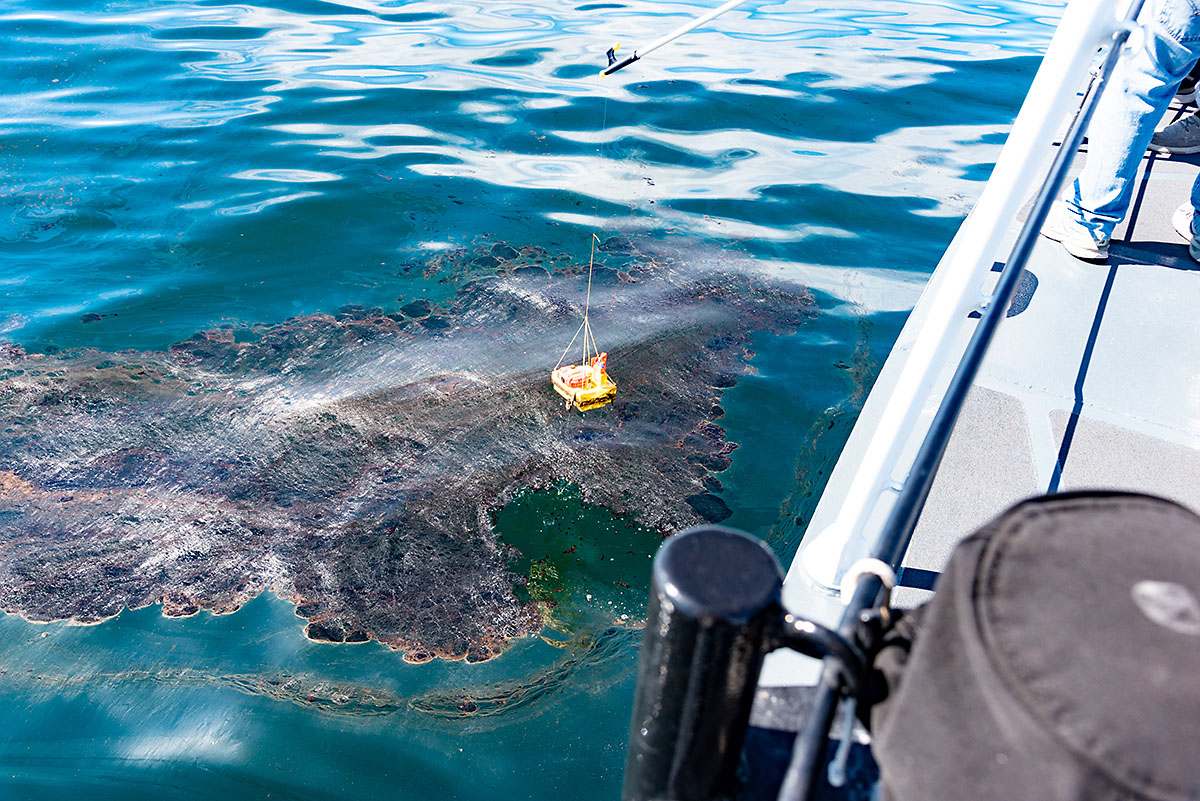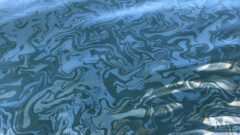Home The Marine Oil Spill Thickness (MOST) project collects measurements of oil thickness in a naturally occurring oil seep off the coast of Santa Barbara, California. The measurements will be used to validate remote sensing data measurements and eventually, in a system to aid in oil spill response. (NOAA/Frank Monaldo) The Marine Oil Spill Thickness (MOST) project collects measurements of oil thickness in a naturally occurring oil seep off the coast of Santa Barbara, California. The measurements will be used to validate remote sensing data measurements and eventually, in a system to aid in oil spill response. (NOAA/Frank Monaldo)
The Marine Oil Spill Thickness (MOST) project collects measurements of oil thickness in a naturally occurring oil seep off the coast of Santa Barbara, California. The measurements will be used to validate remote sensing data measurements and eventually, in a system to aid in oil spill response. (NOAA/Frank Monaldo)



